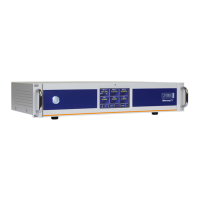MercuryiTC
©2014 Oxford Instruments Omicron NanoScience. All rights reserved.
Page 64
4.11.7 Available generic calibration files
The MercuryiTC includes calibration curves for the following sensor types.
Code Sensor Temperature range
Lin
1
Linear range 0-1677.7
Null Centre zero -838.9 to +838.9
Con 1 Conductance 0 to 20
TG 5 AuFe 0.03/Chr 2 to 500K
TG_57 AuFe 0.07/Chr 2 to 500K
CN 3 Cernox resistor 1.5 to 300K
TT 5 Copper/Const 20 to 500K
TT 4 Copper/Const -250 to 400°C
TK10_13 Chromel/Alumel -200 to 1370°C
CR 11 Ruthenium oxide 0.25 to 10K
RF 52
2
RhFe resistor 1.5 to 500K
RP 1 Platinum resistor -200 to +100°C
RP 5
3
Platinum resistor 20 to 500K
RP 51
4
Platinum resistor 50 to 500K
RL 3 CLTS 2 to 300K
DS 32 Silicon diode (OI) 2 to 300K
DS 31 Silicon diode (LS) 2 to 300K
CA 21 100R Allen Bradley 4 to 250K
CA 22 270R Allen Bradley 4 to 250K
CS 01 470R Speer 0.25 to 9.999K
Your MercuryiTC may not have all the above calibration files pre-loaded.
1
The Lin and Null ranges are general purpose ranges that may be configured for any required span and zero. Both ranges provide
a linear relationship between input and display. The Lin range is unipolar while the Null range is bipolar.
2
The iTC includes two curves for 27 ohm Rhodium-Iron sensors. Curve A is used for sensors having a resistance of 2 ohms or
greater at 4.2K. Curve B is used for sensors having a resistance of less than 2 ohms at 4.2K. Using the appropriate curve should
produce linearization errors of less than 1% over the full temperature range. For a more accurate fit to a specific sensor, order a
custom calibration.
3
This is for a pure Platinum element.
4
This is for a platinum element that is ballasted to BS1904/DIN43760. This element is more readily available than a pure platinum
element but its performance is unspecified below 73K. The data for 50-70K is based on BS1904:964 rather than BS1904:1984.

